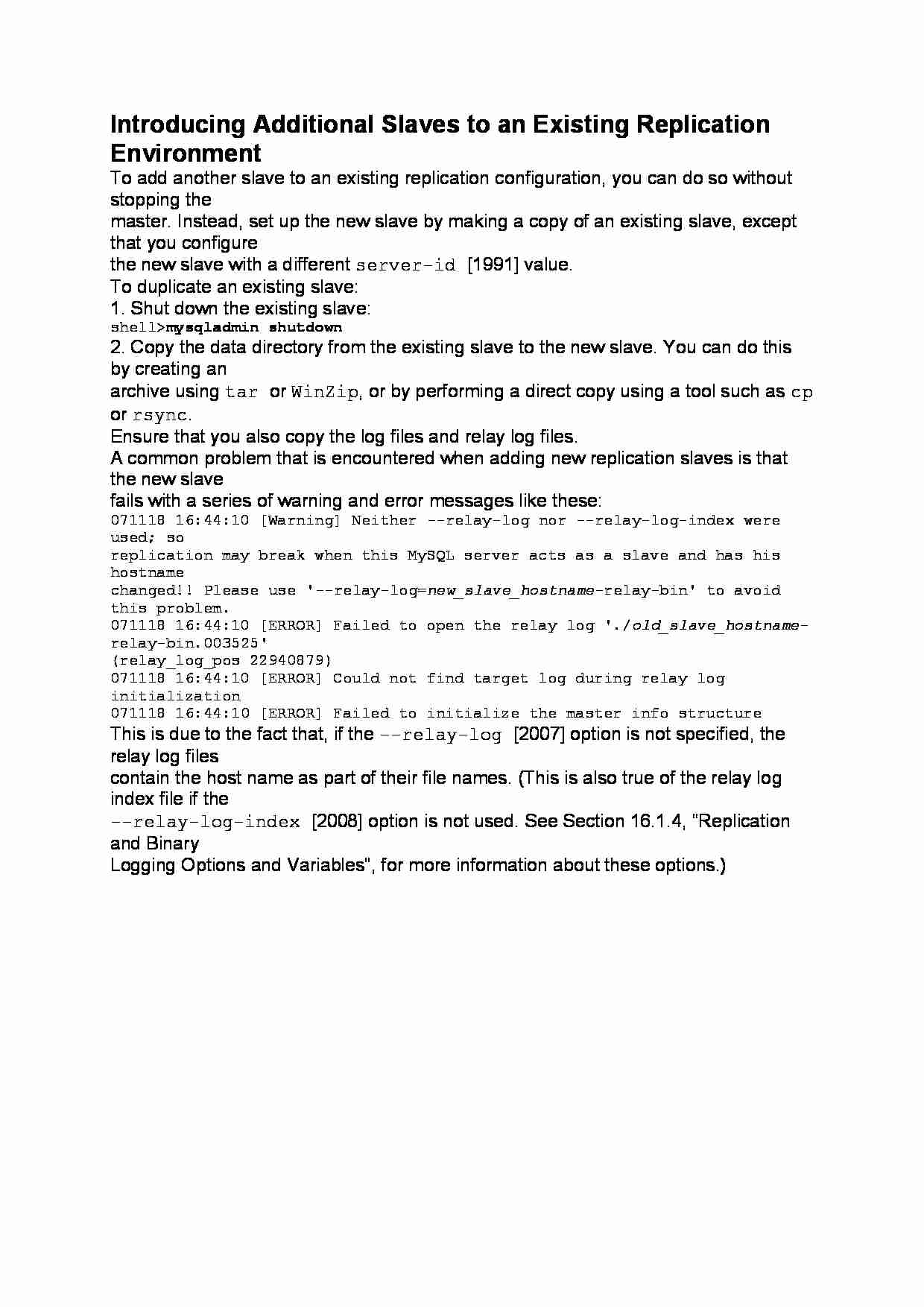
Introducing Additional Slaves to an Existing Replication Environment
To add another slave to an existing replication configuration, you can do so without stopping the
master. Instead, set up the new slave by making a copy of an existing slave, except that you configure
the new slave with a different server-id [1991] value.
To duplicate an existing slave:
1. Shut down the existing slave:
shell mysqladmin shutdown
2. Copy the data directory from the existing slave to the new slave. You can do this by creating an
archive using tar or WinZip, or by performing a direct copy using a tool such as cp or rsync.
Ensure that you also copy the log files and relay log files.
A common problem that is encountered when adding new replication slaves is that the new slave
fails with a series of warning and error messages like these:
071118 16:44:10 [Warning] Neither --relay-log nor --relay-log-index were used; so
replication may break when this MySQL server acts as a slave and has his hostname
changed!! Please use '--relay-log=new_slave_hostname-relay-bin' to avoid this problem.
071118 16:44:10 [ERROR] Failed to open the relay log './old_slave_hostname-relay-bin.003525'
(relay_log_pos 22940879)
071118 16:44:10 [ERROR] Could not find target log during relay log initialization
071118 16:44:10 [ERROR] Failed to initialize the master info structure
This is due to the fact that, if the --relay-log [2007] option is not specified, the relay log files
contain the host name as part of their file names. (This is also true of the relay log index file if the
--relay-log-index [2008] option is not used. See Section 16.1.4, “Replication and Binary
Logging Options and Variables”, for more information about these options.)
... zobacz całą notatkę



Komentarze użytkowników (0)